ROBERTO OSTI
DRAWING THE HAND
ROBERTO OSTI helps us get a grip on a tricky part of the body.
The hand is a marvel of functionality and aesthetics.
The complexity of its forms and its inherent mutability make it a challenging but extremely rewarding subject.
This complexity can be better understood by conceptualizing its forms. In my anatomy and figure-drawing classes, I teach my students to focus on only a few essential characteristics of the hand at any given time, limiting its complexity.
This method— which can be applied to other subjects as well—was developed during the Renaissance and has been further refined since.
The complexity of its forms and its inherent mutability make it a challenging but extremely rewarding subject.
This complexity can be better understood by conceptualizing its forms. In my anatomy and figure-drawing classes, I teach my students to focus on only a few essential characteristics of the hand at any given time, limiting its complexity.
This method— which can be applied to other subjects as well—was developed during the Renaissance and has been further refined since.
ANATOMY
Here we’ll focus less on anatomy than on the volumes and proportions of the hand, but it’s important to know the basics of the hand’s structure.As we see in figure 1, the skeleton of the hand consists of eight carpal bones (blue), five metacarpal bones (orange) and 14 finger bones, or phalanges (yellow).
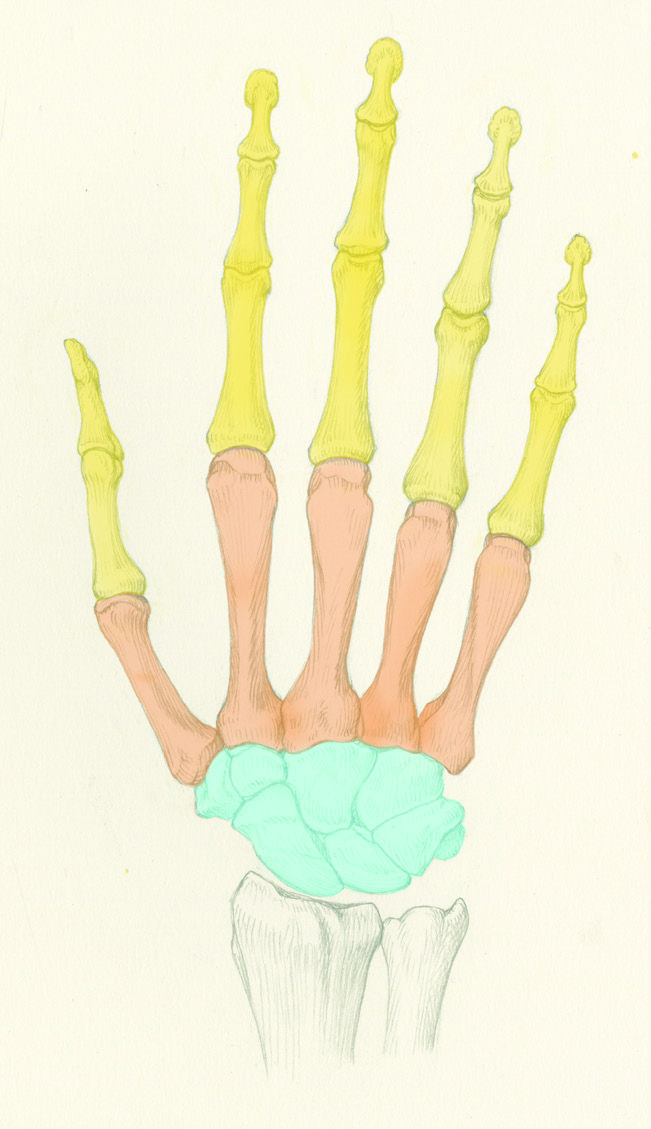
Fig. 1
PROPORTIONAL RELATIONSHIPS
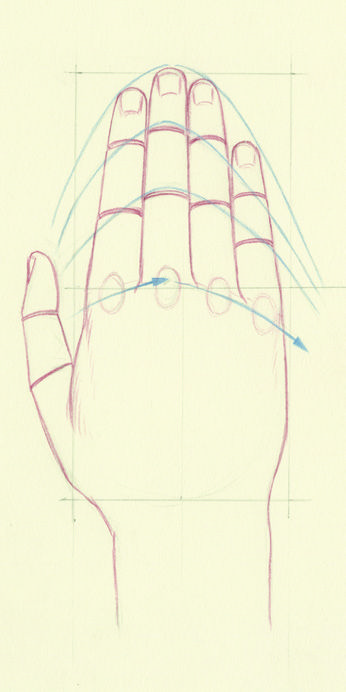
Fig. 2
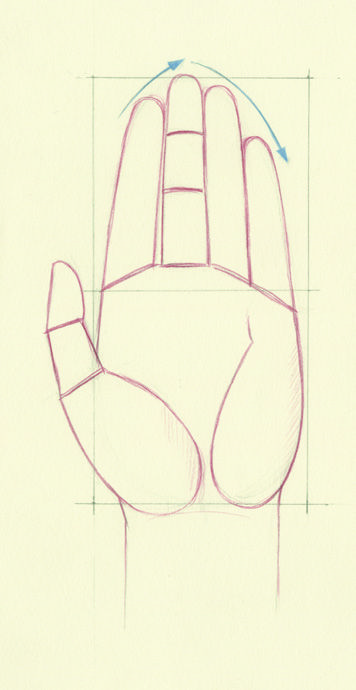
Fig. 3
Looking at the back of the hand (figure 2), we see:
Looking at the front of the hand (figure 3), we see:
- The hand is about twice as high as it is wide.
- The length of the middle finger is the same as the length of the back of the hand.
- We can detect patterns created by the alignments of the knuckles and of the finger joints.
Looking at the front of the hand (figure 3), we see:
- The curve created by the tips of the fingers is short and steep on the thumb side and long and more gradual on the pinkie side.
- The base of the fingers form a curve where they stem from the palm of the hand.
- The various segments that compose the hand get shorter as they move toward the tips of the fingers; the palm is the longest, and the phalanges at the tips of the fingers are the shortest.
- The base of the thumb, where it meets with the first metacarpal bone, occurs about halfway up the height of the palm.
ESSENTIAL VOLUMES
The organic forms of the hand can be reduced to basic, essential volumes, making it easier to capture the hand’s structural aspect.
Figures 4 and 5 show the hand as an assemblage of relatively simple volumes such as cylinders and boxes.
We can judge each of these segments by considering its height, width and depth. This makes it easier to create foreshortenings, to overlap volumes, to draw dynamic poses and to better understand the effect of light on its forms, leading to more convincing and realistic drawings (see figure 6).
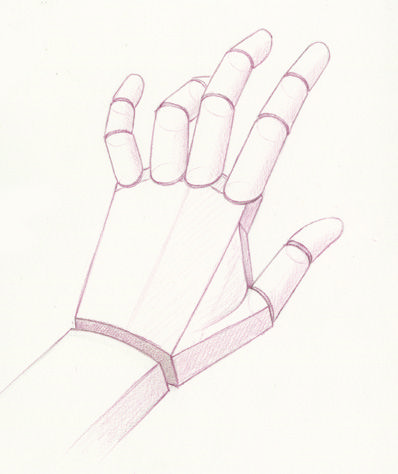
Fig. 4
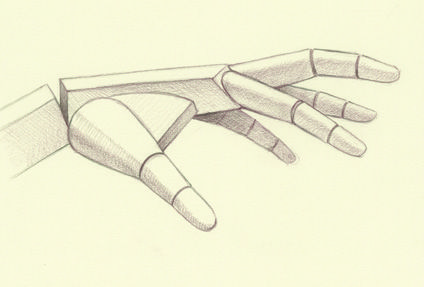
Fig. 5
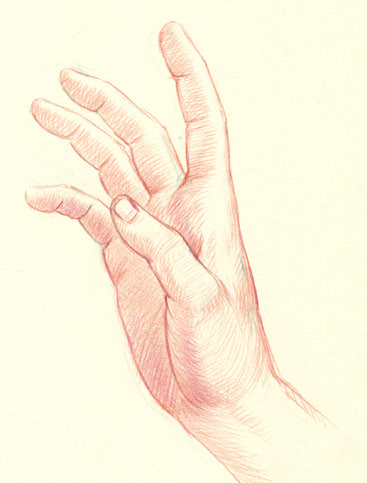
Fig. 6
THE WAY YOU THINK AND THE WAY YOU DRAW
The sequence in figure 7 shows a process for analyzing the volumes of the hand:
- A. Begin by drawing the palm of the hand, the length of the middle finger and the thenar eminence, at the base of the thumb.
- B. Add lines indicating the remaining fingers.
- C. Shape these lines into basic volumes.
- D. Working from those basic volumes, draw the organic forms of the hand.
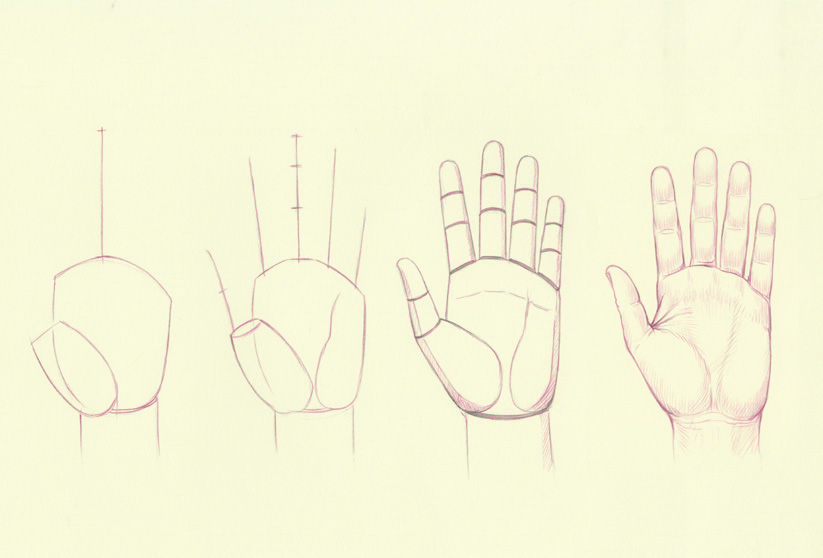
Fig. 7
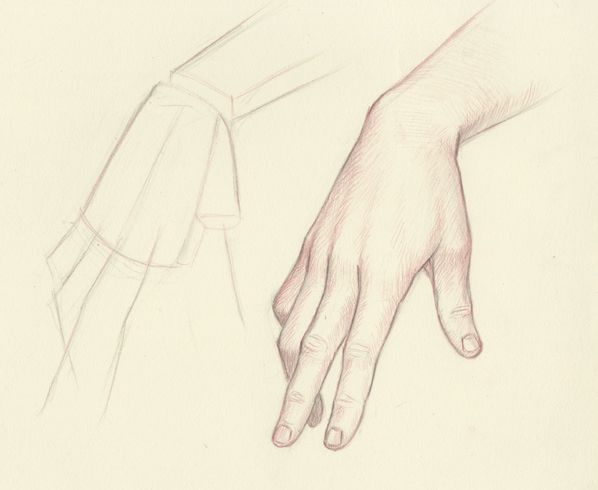
Fig. 8



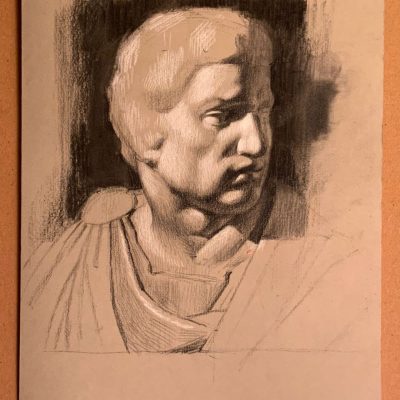

2 Comments
Thank you for this great instruction. Very helpful
Thank you, Roberto! Appreciating these insights and looking forward to receiving your latest book.